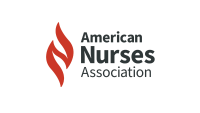Knowledge and actions reap benefits for our patients, ourselves.


Women’s heart health comes to the fore each February when women and men nationwide wear red to raise awareness of women’s risk of cardiovascular disease (CVD) and support them in reducing their personal risk. This cause affects nurses on several fronts. Our profession, predominantly female, reflects the CVD risk all women face: CVD remains the leading cause of death in women, yet less than half of women know about this threat.
Additionally, as the Pulse on the Nation’s Nurses Survey Series has shown repeatedly, fraught workplace environments mean nurses practice under sustained stress, which can contribute to CVD. We’re also an aging workforce, with many of us having experienced major life events that can raise the risk of developing CVD (pregnancy) or ramp-up risk factors (menopause).
Top heart health apps for nurses
American Heart Association: E-cigarettes are not safe alternative
As we honor the immense contributions of African Americans through time and scope during Black History Month in February, let’s acknowledge as well that nurses of color face an elevated risk compared to their White counterparts: nearly 58% of Black women have hypertension, and nearly 59% age 20 or older have CVD, according to the American Heart Association. Similarly, Hispanic women are likely to develop heart disease 10 years earlier than non-Hispanic women. CVD also accounts for more than one-third of the alarmingly high maternal deaths in the United States, which disproportionately occur in women of color.
These statistics underscore the urgency for nurses to pay attention to our own health. The Code of Ethics for Nurses with Interpretive Statements affirms that we owe “the same duties to self as to others, including the responsibility to promote health and safety.” We diligently serve our patients, families, and communities, but too frequently self-care lands far down the list. By investing in ourselves with even micro actions, we can promote our physical and mental health. The ANA Enterprise Healthy Nurse, Healthy Nation™ and Well-Being Initiative offer resources that consider nurses’ differing needs as well as their time and access constraints (hnhn.org; nursingworld.org/thewellbeinginitiative). The Nurses Obesity Network, which ANA Enterprise cosponsors, also provides resources for advancing care for people living with obesity, a key contributor to CVD (nursesobesitynetwork.org).
Let’s also recognize that CVD can present differently in women than men. If you aren’t feeling quite right, don’t dismiss your symptoms. See your provider, and discuss your health with loved ones.
Women’s risk of CVD—especially the heightened yet not-well-recognized risk in women of color—also calls nurses and the nursing profession to invest more in understanding and rooting out these disparities, fueled substantially by social determinants of health (SDOH). The Nursing Scope and Standards of Practice urges nurses to advocate for social and environmental justice, community engagement, and access to high-quality and equitable healthcare, all of which aim to optimize health outcomes and eliminate health disparities.
Nurse researchers, approaching the complexities of SDOH from a fresh perspective, play a vital role in identifying underlying issues and proposing and testing interventions for better serving at-risk communities.
The ANA position statement, The Nurse’s Role and Responsibility in Unveiling and Dismantling Racism in Nursing, recommends actively engaging with and attending to “the socially constructed disparities and inequities both experienced and propagated by our profession,” looking beyond patient behaviors and adherence. This process starts with listening to our patients, understanding who and where they are as individuals, and collaborating with them for joint goals aimed at optimizing their health.
This act and others—for ourselves and our patients—support our aim: a healthy world through the power of nursing.


Jennifer Mensik Kennedy,
PhD, MBA, RN, NEA-BC, FAAN, President,
American Nurses Association
American Nurse Journal. 2024; 19(2). Doi: 10.51256/ANJ022420




















